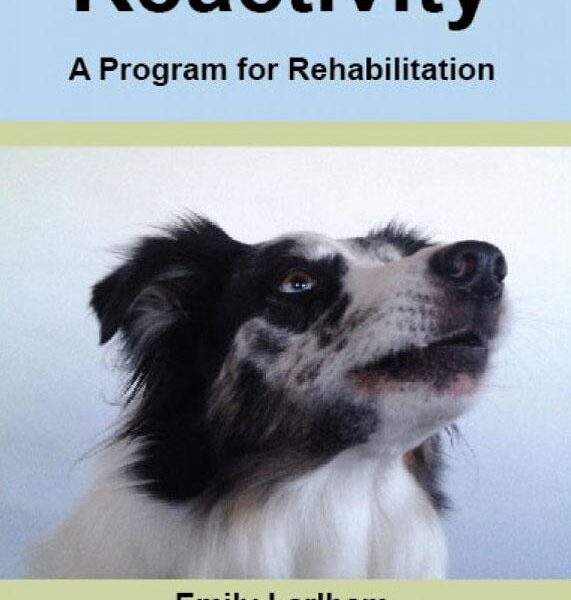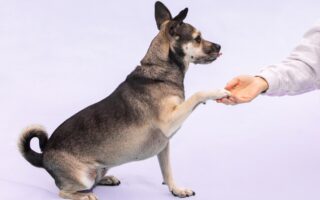Unlocking Calm: A Guide to Reactivity Training for Dogs
In a world filled with bustling streets, playful parks, and unexpected encounters, our dogs inevitably face a myriad of stimuli that can trigger heightened reactions. From the sudden appearance of a jogger to the abrupt bark of a passing pooch, these moments can transform a simple walk into a challenging experience for both pups and their owners. Enter reactivity training—a tailored approach designed to help anxious or overly excited dogs navigate their environment with confidence and composure. This article delves into the principles and techniques of reactivity training, offering pet owners the tools to foster a harmonious relationship with their canine companions. Whether you’re dealing with a timid tail or an exuberant barker, understanding reactivity can empower you to unlock a new level of peace and mutual enjoyment in your shared adventures.
Table of Contents
- Understanding Reactivity: The Root Causes Behind Your Dogs Behavior
- Essential Techniques for Effective Reactivity Training
- Creating a Positive Environment: The Role of Socialization and Exposure
- Maintaining Progress: Tips for Long-Term Success in Reactivity Management
- Q&A
- In Retrospect
Understanding Reactivity: The Root Causes Behind Your Dogs Behavior
Rethinking the underlying reasons for your dog’s reactivity can pave the way for effective solutions. Understanding your dog’s behavior often involves recognizing the triggers that provoke their responses. Various factors contribute to reactivity, including:
- Fear and Anxiety: Dogs may become defensive if they feel threatened, leading to reactive behaviors as a means of protection.
- Lack of Socialization: Insufficient exposure to different environments, people, and animals can result in overreactive responses to unfamiliar stimuli.
- Frustration: Dogs may react aggressively when their desire to engage or play is blocked, leading to outbursts of unwanted behavior.
Moreover, it’s crucial to understand that reactivity does not stem from a breed-specific trait but rather from individual circumstances in each dog’s life. Behavioral responses can also be influenced by:
- Past Experiences: Traumatic encounters can lay the groundwork for heightened reactivity.
- Health Issues: Physical pain or discomfort may manifest as irritability or aggression.
- Owner Influence: A dog’s behavior can be shaped by the owner’s emotions and training methods, directly impacting their reactivity.
Essential Techniques for Effective Reactivity Training
To effectively manage your dog’s reactivity, establishing a strong foundation of positive reinforcement is crucial. Start by rewarding calm behavior with treats or praise, creating a positive association with previously triggering situations. Gradually introduce your dog to controlled environments where they can encounter their triggers at a manageable distance. This helps them learn that they can remain calm and not react with fear or aggression. Use desensitization techniques to gradually reduce the intensity of their reactions, pairing their exposure with rewards to form positive connections.
Incorporating structured exercises can further enhance your training. Consider implementing the following techniques:
- Engagement Games: Use toys or treats to redirect your dog’s focus when they spot a trigger.
- Controlled Exposures: Plan short outings to areas with manageable levels of triggering stimuli.
- Calm Cues: Teach commands such as “look” or “leave it” to refocus their attention.
Using these techniques consistently will help reinforce positive behavior and foster a more relaxed attitude in your dog.
Creating a Positive Environment: The Role of Socialization and Exposure
Understanding the impact of socialization on dogs is crucial in fostering a calm and confident pet. Introducing your dog to a variety of environments, people, and other animals can significantly reduce reactivity. This process not only helps your dog learn appropriate behaviors but also encourages them to adapt to new situations with ease. Creating a positive socialization plan can include:
- Gradual exposure to different stimuli.
- Controlled interactions with other dogs and pets.
- Regular visits to parks or busy streets to accustom them to various sights and sounds.
- Positive reinforcement techniques to build confidence, like treats and praise.
Additionally, a structured approach to socialization can prevent future behavioral issues and enhance your dog’s overall well-being. Consider developing a schedule that incorporates regular outings to diverse environments. Maintaining consistency in positive experiences will create a strong foundation for your dog’s confidence. Here’s a simple framework to follow:
| Activity | Frequency | Notes |
|---|---|---|
| Visit parks | 2-3 times a week | Start during off-peak hours |
| Meet other dogs | Weekly | Choose calm dogs for interactions |
| Expose to new sounds | Daily | Use recordings or real-life sounds |
Maintaining Progress: Tips for Long-Term Success in Reactivity Management
Building lasting success in reactivity management requires consistent effort and a positive mindset. Regular practice sessions are key; aim to incorporate short, daily training that reinforces the lessons learned. Engaging your dog in new environments can also help solidify their progress. Remember to focus on gradual exposure to stimuli, allowing your pet to grow more comfortable over time rather than overwhelming them. Utilize positive reinforcement techniques, rewarding good behaviors and minimizing negativity to foster a supportive atmosphere for learning.
Monitoring your dog’s progress is essential for adapting your training approach. Keep a detailed journal to document your sessions, noting specific triggers and your dog’s responses. This practice not only allows you to celebrate small victories but also helps identify patterns that may need addressing. Create a support system by joining local training groups or online forums, where you can share experiences and gain insights from others. Consider the following key elements for ongoing success:
- Consistency: Stick to a routine to build reliability in training.
- Patience: Allow your dog ample time to adjust and learn.
- Flexibility: Modify tactics based on your dog’s unique needs.
- Celebration: Celebrate progress, no matter how small, to motivate both you and your dog.
Q&A
Q&A: Understanding Reactivity Training for Dogs
Q1: What exactly is reactivity in dogs?
A1: Reactivity in dogs refers to their heightened response to stimuli in their environment. This can manifest as barking, lunging, growling, or other intense behaviors when confronted with specific triggers — such as other dogs, people, or loud noises. Essentially, a reactive dog feels overwhelmed and responds in a way that their instinct tells them is necessary, often leading to frustration for both the dog and the owner.
Q2: Why is reactivity training important?
A2: Reactivity training is crucial because it fosters better behavior in dogs and enhances their confidence in various social situations. By addressing reactive tendencies, we create a more harmonious environment where dogs can feel secure enough to interact appropriately. This not only improves the dog’s quality of life but also eases the stress of their owners, allowing for more enjoyable outings and interactions.
Q3: How can reactivity training benefit my dog?
A3: Through reactivity training, your dog learns to manage their responses to triggers, reducing fear and anxiety. This program helps them develop coping mechanisms, offers them positive reinforcement for calm behavior, and enhances their socialization skills. With practice, your dog can learn to respond more thoughtfully, transforming situations that once led to outbursts into calmer, more manageable experiences.
Q4: What are some common techniques used in reactivity training?
A4: Reactivity training often involves techniques such as desensitization and counter-conditioning. Desensitization gradually exposes your dog to their triggers at a distance where they feel comfortable, allowing them to acclimate over time. Counter-conditioning pairs the sight of a trigger with something positive, like treats or play, to change the dog’s emotional response. Additionally, leash training and focusing exercises can improve your dog’s attention on you during walks in busy environments.
Q5: How long does it typically take to see results from reactivity training?
A5: The timeline can vary greatly depending on the individual dog and the severity of their reactivity. Some dogs may show improvement within a few weeks, while others may take several months of consistent training to become more relaxed around their triggers. Patience and consistency are key; celebrating small victories along the way can help build your dog’s confidence and reinforce positive behavior.
Q6: Can I handle reactivity training on my own, or should I seek professional help?
A6: While some owners can successfully implement reactivity training techniques, it’s often beneficial to work with a professional dog trainer or a behaviorist, especially for more severe cases. An expert can provide personalized strategies, help navigate complex behavior, and offer support in addressing specific triggers. Their experience can be invaluable in ensuring that your training plan is effective and tailored to your dog’s unique needs.
Q7: Are there specific breeds that are more prone to reactivity?
A7: Reactivity can affect any breed, but some breeds known for high energy, protective instincts, or over-attachment to their owners may exhibit these behaviors more readily. However, it’s important to note that individual temperament and previous experiences play significant roles. Regardless of breed, any dog can benefit from reactivity training, leading to better understanding and management of their behaviors.
Q8: What should I keep in mind while starting reactivity training?
A8: The most important thing to remember is to be patient and compassionate with your dog. Every dog learns at their own pace, so allow them time to process and respond to training. Avoid punishing reactive behaviors, as this can increase fear and anxiety. Instead, focus on positive reinforcement techniques and create a safe environment where your dog feels encouraged to learn and grow. A calm, supportive approach will yield the best long-term results.
—
By understanding reactivity training and its benefits, dog owners can foster strong, positive relationships with their pets, leading to happier lives for both. Happy training!
In Retrospect
As we conclude our exploration of reactivity training for dogs, it becomes clear that fostering a calm and confident canine companion is not just an end goal, but a journey rich with connections and understanding. Each bark, each wag, and each moment of progress represents a step toward a more harmonious relationship between you and your furry friend. The tools and techniques we’ve discussed serve as a foundation for building resilience, patience, and trust—elements essential for any successful partnership.
Remember, reactivity is often a communication of emotion, a call for understanding that you can respond to with compassion and dedication. Embrace the training process, and take heart in the small victories along the way. With consistent practice and a commitment to growth, not only will your dog become better equipped to handle the world around them, but you too will discover the profound rewards of companionship, enriched by shared experiences and newfound insights.
So gear up for the adventure ahead! Each session of training is an opportunity to strengthen the bond between you and your dog. Together, you can transform challenges into triumphs, paving the way for a calmer, more enjoyable life—one bark at a time.



